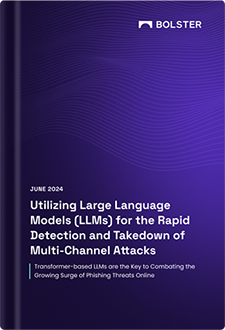CEO spamming is a significant cybersecurity threat that can impact businesses of all sizes. It involves the mass distribution of unsolicited emails that appear to come from a company’s top executive, such as the CEO. The sender’s address is manipulated to look authentic, fooling recipients into believing the message is genuine. These emails often contain promotional materials, phishing links, or malware, aiming to deceive recipients into taking harmful actions.
Here is a breakdown of the main characteristics:
Mass Distribution: These emails are sent to a wide audience, often including employees, clients, and external contacts. The sheer volume of emails increases the likelihood that at least some recipients will fall victim to the scam.
Spoofed Addresses: The sender’s address is forged to look like it’s from a legitimate executive within the company. This technique, known as email spoofing, exploits the trust recipients have in communications from high-level executives.
Generic Content: The emails usually contain promotional materials, phishing links, or attachments with malicious software. The content is often crafted to appear professional and relevant, making it harder for recipients to identify the email as spam.
Risks Associated with CEO Spamming
CEO spamming poses several serious risks to organizations, ranging from technical threats to reputational damage. These risks can lead to significant financial losses, compromised sensitive information, and long-term negative impacts on business relationships.
Malware Infections: Recipients might unknowingly download malware, leading to data breaches and other security issues. Malware can compromise sensitive information, disrupt business operations, and lead to significant financial losses.
Phishing Attacks: Clicking on malicious links can result in credential theft, putting the organization’s sensitive information at risk. Attackers can use stolen credentials to gain unauthorized access to corporate networks and data.
Reputational Damage: The company’s reputation may suffer if it is perceived as the source of spam, leading to a loss of trust among clients and partners. This can have long-term negative effects on customer relationships and business opportunities.
How CEO Spamming Differs from CEO Fraud
While CEO spamming and CEO fraud might sound similar, they involve different tactics and objectives. Here’s a brief comparison.
CEO Spamming
Method: Involves sending mass emails that appear to come from a CEO.
Content: Typically includes promotional materials, phishing links, or malware.
Target: Broad audience, including employees, clients, and external contacts.
Objective: To spread malicious content widely and deceive a large number of recipients.
Learn more about malware vs. ransomware
For example:
Subject: Exciting New Partnership Opportunities!
From: John Doe, CEO
To: [Recipient List]
Dear Team,
I am thrilled to announce new partnership opportunities that could significantly boost our growth. Please review the attached document for more details and feel free to share your thoughts.
Best,
John
In this example, the call-to-action to “Please review the attached document…” prompts recipients to open the attachment, which likely contains malicious software or phishing links.
CEO Fraud
Method: A targeted phishing attack where the attacker impersonates the CEO.
Content: Often involves urgent and personalized requests, such as transferring money or sharing sensitive information.
Target: Specific individuals within the organization, such as finance managers or executives.
Objective: Financial gain or theft of sensitive information, achieved through highly targeted and personalized deception.
For example:
Subject: Urgent: Immediate Wire Transfer Required
From: John Doe, CEO
To: Jane Smith, Finance Manager
Hi Jane,
I need you to process a wire transfer of $50,000 to the following account immediately. It’s crucial for closing an important deal. I am currently in a meeting and can’t be reached by phone, so please handle this as soon as possible.
Account Details:
Account Name: XYZ Ltd.
Account Number: 123456789
Bank: ABC Bank
Best,
John
In this example, the fraudster directs Jane to take specific action—initiating and completing a wire transfer. The sense of urgency and the instruction to handle it promptly without further verification are designed to compel Jane to act quickly, bypassing standard procedures or checks that might otherwise prevent the fraud.
Protecting Your Organization from CEO Spamming
To safeguard your organization from CEO spamming, consider implementing the following measures.
Email Filtering: Use advanced email filtering solutions to detect and block spam emails before they reach recipients. These filters can analyze email headers, content, and attachments to identify and quarantine suspicious emails.
Employee Training: Educate employees about the risks of CEO spamming and how to recognize suspicious emails. Regular training sessions and simulated phishing exercises can improve employees’ ability to spot and report phishing attempts.
Authentication Technologies: Implement email authentication protocols such as SPF, DKIM, and DMARC to verify the legitimacy of email senders. These technologies help prevent email spoofing by ensuring that emails are sent from authorized domains.
Incident Response Plan: Develop a robust incident response plan to address potential security breaches promptly. This plan should include procedures for identifying, containing, and mitigating the impact of a CEO spamming attack.
Regular Audits and Updates: Conduct regular security audits to identify vulnerabilities and ensure that all security measures are up-to-date. Keeping software and systems updated with the latest security patches can reduce the risk of exploitation by attackers.
By understanding CEO spamming and taking proactive measures, you can better protect your organization from this pervasive threat. Stay vigilant and prioritize cybersecurity to ensure your company remains secure in the face of evolving cyber risks.
AI-powered email security solutions are key for protecting organizations against CEO spamming and other related attacks. Checkphish also provides an email phishing link checker among other solutions to help safeguard and keep your organization in good standing.









